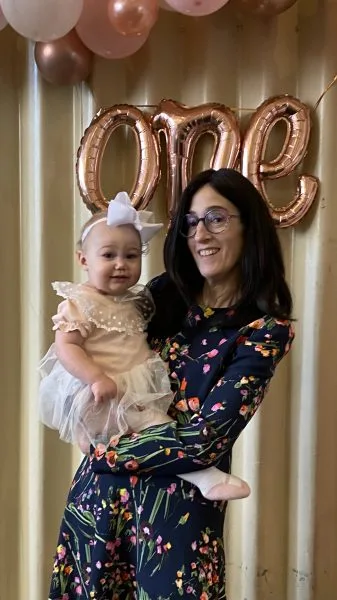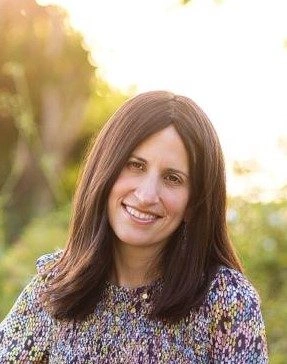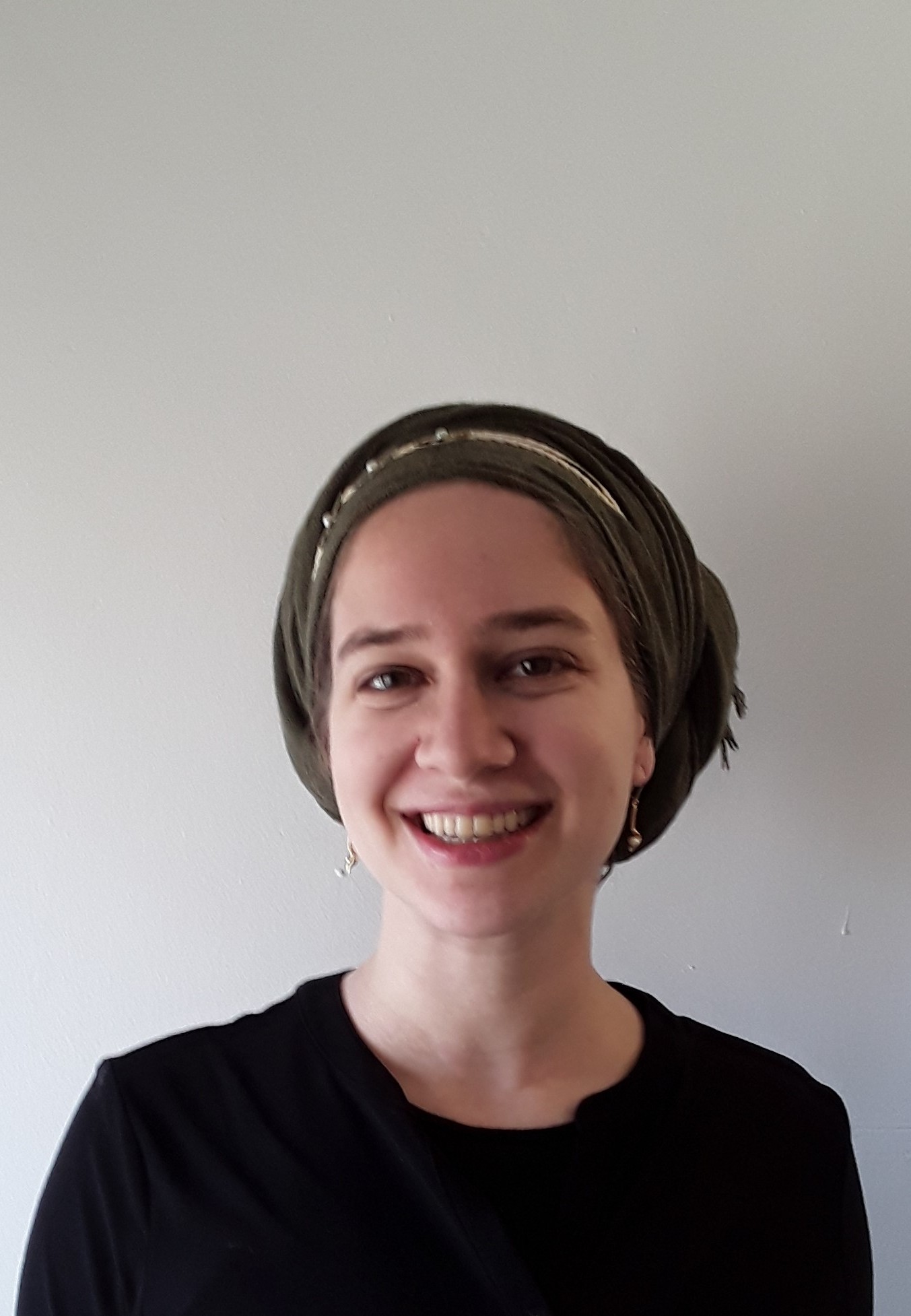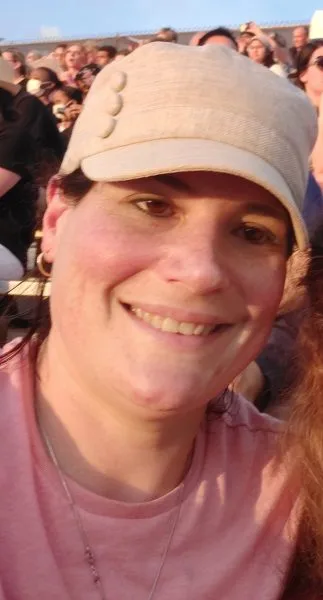Yevamot 104
וְשֶׁל עִיר הַנִּדַּחַת, וְשֶׁל זָקֵן הֶעָשׂוּי לִכְבוֹדוֹ — לֹא תַּחְלוֹץ, וְאִם חָלְצָה — חֲלִיצָתָהּ פְּסוּלָה.
or a sandal belonging to an inhabitant of an idolatrous city, a city the majority of whose inhabitants committed idolatry, which stands to be destroyed with all of the city’s property; and likewise, the sandal of an Elder made in accordance with his dignity to be worn upon his death as part of his shroud, i.e., it is not meant for walking as a normal shoe, the yevama may not perform ḥalitza using any of these shoes. And if she did perform ḥalitza, her ḥalitza is invalid even after the fact, as these are not halakhically considered shoes.
אֲמַר לֵיהּ רָבִינָא לְרַב אָשֵׁי: מַאי שְׁנָא זָקֵן הֶעָשׂוּי לִכְבוֹדוֹ — דְּלָאו לְהִילּוּכָא עֲבִיד, דְּבֵי דִּינָא נָמֵי — לָאו לְהִילּוּכָא עֲבִיד!
Ravina said to Rav Ashi: What is different about the sandal of an Elder that is made in accordance with his dignity that one should say that even though it is the proper size for his foot, it is not valid because it was not made for walking, but merely for him to wear after his death. But the court’s sandal also was not made for walking, as the court kept a sandal that met all the other necessary qualifications for a sandal for ḥalitza and gave it to the yavam to be worn during the ḥalitza procedure. Since the yavam would return the ḥalitza sandal after the conclusion of the ḥalitza, therefore, the sandal was never used for walking and should be invalidated for ḥalitza just as the sandal made for the dignity of an Elder?
אֲמַר לֵיהּ: אִילּוּ מְסַגֵּי בֵּיהּ שְׁלוּחָא דְּבֵי דִּינָא, מִי קָפֵיד עֲלֵיהּ דַּיָּינָא?
He said to him: If a messenger of the court had walked in the ḥalitza shoe used by the court, would the judge reprimand him? Although the court’s sandal was designed for the express purpose of ḥalitza, it may also be used for walking. A shoe designed for a dead person, on the other hand, is forbidden for any other use and is not made for walking at all, and it is consequently disqualified.
מַתְנִי׳ חָלְצָה בַּלַּיְלָה — חֲלִיצָתָהּ כְּשֵׁרָה, וְרַבִּי אֶלְעָזָר פּוֹסֵל. בִּשְׂמֹאל — חֲלִיצָתָהּ פְּסוּלָה, וְרַבִּי אֶלְעָזָר מַכְשִׁיר.
MISHNA: If a woman performed ḥalitza at night, her ḥalitza is valid, but Rabbi Elazar invalidates it. If she performed ḥalitza on the left foot, her ḥalitza is invalid, but Rabbi Elazar validates it.
גְּמָ׳ לֵימָא בְּהָא קָמִיפַּלְגִי: דְּמָר סָבַר מַקְּשִׁינַן רִיבִים לִנְגָעִים, וּמָר סָבַר לָא מַקְּשִׁינַן רִיבִים לִנְגָעִים?
GEMARA: Let us say that they disagree about this issue: One Sage, Rabbi Elazar, holds that we compare the halakhot governing monetary disputes, which category includes ḥalitza, as ḥalitza carries with it monetary ramifications and requires payment of the marriage contract to the yevama, with the halakhot of leprosy. Just as leprosy cases are judged only during the day (see Leviticus 13:14), likewise, monetary cases may take place only during the day. And one Sage, the first tanna, holds that we do not compare monetary disputes with leprosy.
לָא: דְּכוּלֵּי עָלְמָא לָא מַקְּשִׁינַן רִיבִים לִנְגָעִים, דְּאִי מַקְּשִׁינַן — אֲפִילּוּ גְּמַר דִּין בַּלַּיְלָה נָמֵי לָא, וְהָכָא בְּהָא קָמִיפַּלְגִי: מָר סָבַר: חֲלִיצָה כִּתְחִלַּת דִּין דָּמְיָא, וּמָר סָבַר: חֲלִיצָה כִּגְמַר דִּין דָּמְיָא.
The Gemara responds: No, everyone holds that we do not compare monetary disputes with leprosy, for if we would compare them fully, then even delivering the verdict of the court case could not be done at night, but it is permitted to complete monetary judgments and deliver the verdict at night, provided the proceedings began during the day. And here, with respect to performing ḥalitza at night they disagree about this issue: One Sage, Rabbi Elazar, holds that ḥalitza is considered like the commencement of judgment of monetary cases, and one Sage, the first tanna, holds that ḥalitza is considered like the verdict of a monetary judgment, and therefore it may also be conducted at night.
רַבָּה בַּר חִיָּיא קְטוֹסְפָאָה עֲבַד עוֹבָדָא בְּמוּק, וּבִיחִידִי, וּבַלַּיְלָה. אָמַר שְׁמוּאֵל: כַּמָּה רַב גּוּבְרֵיהּ דְּעָבֵיד כִּיחִידָאָה.
It is told: Rabba bar Ḥiyya Ketosfa’a, from Ctesiphon, conducted ḥalitza using a slipper that was not made of leather, and he did so in private, as he was the only judge, and by night. Shmuel said disparagingly: How great is the power of this master who follows an individual opinion, as in his practice he relied on individual opinions that are not accepted as halakha.
מַאי קַשְׁיָא? אִי מוּק — סְתָמָא תַּנְיָא. אִי לַיְלָה — סְתָמָא תַּנְיָא.
The Gemara asks: What is difficult for Shmuel about Rabba bar Ḥiyya’s actions? If it was the fact that he conducted ḥalitza using a slipper, an unattributed opinion is taught in a baraita stating that this is valid. As the opinion is unattributed, this indicates that it is not the view of one individual, but rather the opinion of the majority. If it was the fact that he performed ḥalitza at night, an unattributed opinion is taught in the mishna stating that it is valid as well.
אֶלָּא יְחִידִי קָא קַשְׁיָא לֵיהּ: הֵיכִי עָבֵיד בִּיחִידִי, דִּיחִידָאָה קָתָנֵי לַהּ. דִּתְנַן: חָלְצָה בִּשְׁנַיִם אוֹ בִּשְׁלֹשָׁה וְנִמְצָא אֶחָד מֵהֶן קָרוֹב אוֹ פָּסוּל — חֲלִיצָתָהּ פְּסוּלָה. וְרַבִּי שִׁמְעוֹן וְרַבִּי יוֹחָנָן הַסַּנְדְּלָר מַכְשִׁירִים. וּמַעֲשֶׂה בְּאֶחָד שֶׁחָלַץ בֵּינוֹ לְבֵינָהּ בְּבֵית הָאֲסוּרִים, וּבָא מַעֲשֶׂה לִפְנֵי רַבִּי עֲקִיבָא וְהִכְשִׁיר.
Rather, it was difficult for him that Rabba bar Ḥiyya conducted ḥalitza in private, as the sole judge: How could he do so in private, as that is taught only in accordance with an individual opinion, as we learned in a mishna: If she performed ḥalitza before two or three judges and one of them is found to be a relative or disqualified, her ḥalitza is invalid. And Rabbi Shimon and Rabbi Yoḥanan the Cobbler validate the judge who is not a relative or disqualified. If there are two judges who are not relatives, then they hold that the ḥalitza is valid, as they validate a ḥalitza performed before two judges. And an incident occurred involving one who performed ḥalitza between him and her alone in prison, as there was no judge present at all, and the incident came before Rabbi Akiva and he validated it.
וְאָמַר רַב יוֹסֵף בַּר מִנְיוֹמֵי [אָמַר רַב נַחְמָן]: אֵין הֲלָכָה כְּאוֹתוֹ הַזּוּג. וְאִיבָּעֵית אֵימָא: כּוּלְּהוּ נָמֵי יְחִידָאָה קָתָנֵי לְהוּ. דְּתַנְיָא, אָמַר רַבִּי יִשְׁמָעֵאל בְּרַבִּי יוֹסֵי: אֲנִי רָאִיתִי אֶת רַבִּי יִשְׁמָעֵאל בֶּן אֱלִישָׁע שֶׁחָלַץ בְּמוּק, בִּיחִידִי, וּבַלַּיְלָה.
And Rav Yosef bar Minyumi said that Rav Naḥman said: The halakha does not follow that pair, i.e., Rabbi Shimon and Rabbi Yoḥanan the Cobbler. Evidently, Rabba bar Ḥiyya relied on the individual opinion of Rabbi Akiva, who permitted ḥalitza in private, and therefore Shmuel commented regarding Rabba bar Ḥiyya’s power to rule based on an individual’s opinion. And if you wish, say that not only does this detail follow an individual opinion, but rather all of these details are taught by an individual opinion. As it is taught in a baraita: Rabbi Yishmael, son of Rabbi Yosei, said: I saw that Rabbi Yishmael ben Elisha performed a ḥalitza using a slipper, in private, and at night. This statement implies that these details are all according to his individual opinion, contrary to the opinion of the rest of the Sages.
בִּשְׂמֹאל חֲלִיצָתָהּ כּוּ׳. מַאי טַעְמָא דְּרַבָּנַן? אָמַר עוּלָּא: יָלְפִינַן ״רֶגֶל״ ״רֶגֶל״ מִמְּצוֹרָע. מָה לְהַלָּן דְּיָמִין, אַף כָּאן דְּיָמִין.
It was taught in the mishna that if ḥalitza was performed using his left foot, her ḥalitza is invalid, while Rabbi Elazar validates it. The Gemara asks: What is the reason of the Rabbis’ opinion? Ulla said: We derive a verbal analogy from the word “foot” stated here, and the word “foot” stated regarding the leper. Just as there, with respect to the leper, it is the right foot (Leviticus 14:14), so too here, with respect to ḥalitza, it is the right foot that must be used.
וְרַבִּי אֶלְעָזָר לָא יָלֵיף ״רֶגֶל״ ״רֶגֶל״ מִמְּצוֹרָע? וְהָתַנְיָא, רַבִּי אֶלְעָזָר אוֹמֵר: מִנַּיִן לִרְצִיעָה שֶׁהִיא בְּאֹזֶן הַיְמָנִית? נֶאֱמַר כָּאן ״אֹזֶן״, וְנֶאֱמַר לְהַלָּן ״אֹזֶן״. מָה לְהַלָּן יָמִין, אַף כָּאן יָמִין!
The Gemara notes: And this would seem to indicate that Rabbi Elazar does not derive “foot” with regard to ḥalitza from the word “foot” from the leper. But isn’t it taught in a baraita: Rabbi Elazar says: From where is it derived that piercing a Hebrew slave’s ear with an awl when the slave chooses to remain in servitude is done specifically on the right ear? “Ear” is stated here in the halakhot pertaining to a pierced slave, and “ear” is stated there in the halakhot of the leper. Just as there, with regard to leprosy, it is the right ear, as it is stated explicitly there, so too here, with regard to piercing the ear, it is the right ear. This statement of Rabbi Elazar implies that he does learn a verbal analogy about the word “right.”
אָמַר רַב יִצְחָק בַּר יוֹסֵף אָמַר רַבִּי יוֹחָנָן: מוּחְלֶפֶת הַשִּׁיטָה.
Rav Yitzḥak bar Yosef said that Rabbi Yoḥanan said: The attribution of the opinions is reversed, meaning that it is Rabbi Elazar who invalidates ḥalitza on the left foot, as he learns an analogy from the halakha with regard to piercing the ear that the right must be used.
רָבָא אָמַר: לְעוֹלָם לָא תֵּיפוֹךְ, ״אֹזֶן״ ״אֹזֶן״ מוּפְנֵי, ״רֶגֶל״ ״רֶגֶל״ לָא מוּפְנֵי.
Rava said: Actually, do not reverse the opinions. The words “ear” and “ear” are free terms, i.e., they are superfluous in their context and therefore it is clear that the Torah included those terms for the express purpose of establishing the verbal analogy. A verbal analogy that is based on otherwise extraneous terms cannot be logically refuted. Therefore, the superfluous “ear” teaches that piercing is done on the right ear. However, the words “foot” and “foot” are not free, because the word “foot,” written with regard to the yavam, is necessary in its context and is not superfluous. Therefore, the verbal analogy of the word “foot” is incomplete.
וְכִי לָא מוּפְנֵי, מַאי פִּירְכָא אִיכָּא? אִיכָּא לְמִיפְרַךְ: מָה לִמְצוֹרָע, שֶׁכֵּן טָעוּן עֵץ אֶרֶז וְאֵזוֹב וּשְׁנִי תוֹלָעַת.
The Gemara asks: And even if they are not both free to be used for exposition, what refutation is there? A verbal analogy that is free to be used for exposition in only one place is still valid, provided there is no reason to refute the comparison. The Gemara explains: It can be refuted, as the leper is unique in that there is a very specific process necessary for his purification: He requires that the blood of the offering be sprinkled upon him, and he requires cedarwood, hyssop, and scarlet thread. Therefore, it is possible to say that the Torah also specified the use of the right foot in the case of the leper. However, this would not necessarily be required with respect to ḥalitza, which lacks such specific halakhot. Consequently, ḥalitza performed using the left foot could be valid.
מַתְנִי׳ חָלְצָה וְרָקְקָה, אֲבָל לֹא קָרְאָה — חֲלִיצָתָהּ כְּשֵׁרָה. קָרְאָה וְרָקְקָה, אֲבָל לֹא חָלְצָה — חֲלִיצָתָהּ פְּסוּלָה. חָלְצָה וְקָרְאָה, אֲבָל לֹא רָקְקָה — רַבִּי אֱלִיעֶזֶר אוֹמֵר: חֲלִיצָתָהּ פְּסוּלָה, רַבִּי עֲקִיבָא אוֹמֵר: חֲלִיצָתָהּ כְּשֵׁרָה.
MISHNA: If she, i.e., the yevama, removed the shoe and spat in accordance with the halakha but did not recite the necessary text, her ḥalitza is valid. If she recited the text and spat but did not remove the shoe, her ḥalitza is disqualified. If she removed the shoe and recited the text but did not spit, Rabbi Elazar says: Her ḥalitza is disqualified, while Rabbi Akiva says: Her ḥalitza is valid.
אָמַר רַבִּי אֱלִיעֶזֶר: ״כָּכָה יֵעָשֶׂה״ — כׇּל דָּבָר שֶׁהוּא מַעֲשֶׂה מְעַכֵּב. אֲמַר לֵיהּ רַבִּי עֲקִיבָא: מִשָּׁם רְאָיָה? ״כָּכָה יֵעָשֶׂה לָאִישׁ״ — כׇּל דָּבָר שֶׁהוּא מַעֲשֶׂה בָּאִישׁ.
Rabbi Elazar said to him: The verse states: “So shall it be done to the man who does not build his brother’s house” (Deuteronomy 25:9). “So” is an exclusionary term indicating that only precisely in this fashion is ḥalitza valid. Therefore, any term that constitutes an action for ḥalitza is indispensable. Rabbi Akiva said to him: You derive proof from there? But it states: “So shall it be done to the man” indicating that only a term constituting an action toward the man, namely any aspect of ḥalitza that concerns the man’s body, such as removal of his shoe, is indispensable. But spitting, which does not involve the man, although it takes place in his presence, is not indispensable.
הַחֵרֵשׁ שֶׁנֶּחְלַץ, וְהַחֵרֶשֶׁת שֶׁחָלְצָה, וְחוֹלֶצֶת לְקָטָן — חֲלִיצָתָהּ פְּסוּלָה. קְטַנָּה שֶׁחָלְצָה — תַּחְלוֹץ מִשֶּׁתַּגְדִּיל, וְאִם לֹא חָלְצָה — חֲלִיצָתָהּ פְּסוּלָה. חָלְצָה בִּשְׁנַיִם אוֹ בִּשְׁלֹשָׁה, וְנִמְצָא אֶחָד מֵהֶן קָרוֹב אוֹ פָּסוּל — חֲלִיצָתָהּ פְּסוּלָה. רַבִּי שִׁמְעוֹן וְרַבִּי יוֹחָנָן הַסַּנְדְּלָר מַכְשִׁירִין. וּמַעֲשֶׂה בְּאֶחָד שֶׁחָלַץ בֵּינוֹ לְבֵינָהּ בְּבֵית הָאֲסוּרִים, וּבָא מַעֲשֶׂה לִפְנֵי רַבִּי עֲקִיבָא וְהִכְשִׁיר.
The mishna lists additional halakhot with regard to ḥalitza. If a deaf-mute man underwent ḥalitza, or a deaf-mute woman performed ḥalitza, or if an adult woman performs ḥalitza with a male minor, her ḥalitza is invalid and the woman may not marry. If a female minor performed ḥalitza, she must perform ḥalitza a second time once she becomes an adult, and if she does not perform the second ḥalitza, her first ḥalitza is invalid. If she performed ḥalitza before two or three judges and one of them is found to be a relative or disqualified as a judge for some other reason, her ḥalitza is invalid. Rabbi Shimon and Rabbi Yoḥanan the Cobbler validate the ḥalitza in this case. And an incident occurred involving a certain person who performed ḥalitza between him and her alone in prison, i.e., not in the presence of others, and the case came before Rabbi Akiva and he validated it.
גְּמָ׳ אָמַר רָבָא: הַשְׁתָּא דְּאָמְרַתְּ קְרִיאָה לָא מְיעַכְּבָא, לְפִיכָךְ אִלֵּם וְאִלֶּמֶת שֶׁחָלְצוּ — חֲלִיצָתָן כְּשֵׁירָה.
GEMARA: Rava said: Now that you have said that recitation of the text is not indispensable in order for the ḥalitza to be valid, therefore if a mute man or a mute woman performed ḥalitza, their ḥalitza is valid. Although the statements should be recited ab initio, since the recitation is not indispensable, mute individuals can perform ḥalitza.
תְּנַן: חֵרֵשׁ שֶׁנֶּחְלַץ, וְהַחֵרֶשֶׁת שֶׁחָלְצָה, וְהַחוֹלֶצֶת מִן הַקָּטָן — חֲלִיצָתָהּ פְּסוּלָה. מַאי טַעְמָא — לָאו מִשּׁוּם דְּלָא בְּנֵי קְרִיָּיה נִינְהוּ! לָא, מִשּׁוּם דְּלָאו בְּנֵי דֵעָה נִינְהוּ.
The Gemara challenges: But we learned in the mishna above: If a deaf-mute man underwent ḥalitza, or a deaf-mute woman performed ḥalitza, or if a woman performs ḥalitza with a male minor, her ḥalitza is invalid. What is the reason that the ḥalitza is invalid? Is it not because they are not competent to recite the text, thereby indicating that the recitation is necessary even after the fact? The Gemara rejects this assertion: No, the reason for disqualifying a deaf-mute man and woman is because they are not considered to have intellectual capacity, and therefore their actions do not have halakhic significance.
אִי הָכִי, אִלֵּם וְאִלֶּמֶת נָמֵי! אָמַר רָבָא: אִלֵּם וְאִלֶּמֶת בְּנֵי דֵעָה נִינְהוּ, וּפוּמַּיְיהוּ הוּא דְּכָאֵיב לְהוּ.
The Gemara asks: If that is so, let us also say that a mute man and woman do not have intellectual capacity. Rava said: A mute man and woman do have intellectual capacity. Rather, it is their mouth that hurts them. Mute individuals have full intellectual capacity; they merely lack a means of expression. The deaf-mute, on the other hand, is not considered to have the mental capacity to speak.
וְהָא אָמְרִי דְּבֵי רַבִּי יַנַּאי: לְפִי שֶׁאֵינוֹ בְּ״אָמַר״ ״וְאָמְרָה״! אֶלָּא, כִּי אִתְּמַר דְּרָבָא אַסֵּיפָא אִתְּמַר: חֵרֵשׁ שֶׁנֶּחְלַץ, וְהַחֵרֶשֶׁת שֶׁחָלְצָה, וְהַחוֹלֶצֶת מִן הַקָּטָן — חֲלִיצָתָהּ פְּסוּלָה.
The Gemara challenges again: But didn’t the scholars from the house of study of Rabbi Yannai say that a deaf-mute man and woman are disqualified from participation in ḥalitza because they cannot fulfill the requirements of “he says” (Deuteronomy 25:8) and “she shall say” (Deuteronomy 25:9), and not due to insufficient intellectual capacity? Rather, when that first statement of Rava was said, it was stated concerning the latter clause of the mishna: If a deaf-mute man underwent ḥalitza, or a deaf-mute woman performed ḥalitza, or if a woman performs ḥalitza on a male minor, her ḥalitza is invalid.
אָמַר רָבָא: הַשְׁתָּא דְּאָמְרַתְּ קְרִיָּיה מְעַכְּבָא, לְפִיכָךְ אִלֵּם וְאִלֶּמֶת שֶׁחָלְצוּ — חֲלִיצָתָן פְּסוּלָה. וּמַתְנִיתִין כְּרַבִּי זֵירָא.
Rava said: You have now said that recitation is indispensable, as can be inferred from the mishna disqualifying the deaf-mute. Therefore, if a mute man or woman performed ḥalitza, their ḥalitza is invalid. And the mishna, which indicates in its first clause that recitation is not indispensable, but later states that ḥalitza performed by someone incapable of recitation is invalid, is in accordance with the opinion of Rabbi Zeira with regard to a meal-offering. A meal-offering is generally a mixture of flour and oil. If flour is added to the oil but they are not mixed, they are considered to be fitting to be mixed so long as there is not an excessive amount of flour.
דְּאָמַר רַבִּי זֵירָא: כׇּל הָרָאוּי לְבִילָּה — אֵין בִּילָּה מְעַכֶּבֶת בּוֹ. וְכֹל שֶׁאֵין רָאוּי לְבִילָּה — בִּילָּה מְעַכֶּבֶת.
This is that which Rabbi Zeira said: Whatever is fitting to be mixed, mixing is not indispensable to it, and it is valid even if it is not mixed. And whatever is not fit to be mixed, e.g., if the quantity of flour is so great that the ingredients cannot be properly mixed, mixing is indispensable for it and it is invalid if it has not been mixed. From here one may learn a general halakhic principle: There are some actions for which their actual performance is not indispensable, provided they are capable of being performed. An action becomes indispensable only if one is unfit or unable to perform it. With regard to recitation of the verses, although it is not indispensable, a mute person is disqualified from performing ḥalitza because he is not capable of reciting the verses.
שְׁלַחוּ לֵיהּ לַאֲבוּהּ דִּשְׁמוּאֵל: יְבָמָה שֶׁרָקְקָה — תַּחְלוֹץ. מִכְּלָל דְּאִיפַּסְלָא לַהּ מֵאַחִין.
They sent the following teaching from Eretz Yisrael to the father of Shmuel: Once a yevama has spat she must perform a complete ḥalitza and may not enter into levirate marriage. The Gemara comments: By inference, you may learn that even though the spitting did not permit her to marry outside the family, she is disqualified from entering into levirate marriage with any of the brothers, and must therefore complete the ḥalitza.
מַנִּי? אִילֵימָא רַבִּי עֲקִיבָא, הַשְׁתָּא וּמָה בִּמְקוֹם מִצְוָה, דְּאִיכָּא לְמֵימַר מִידֵּי דְּהָוֵה אַאֵימוּרִים, דְּכִי לֵיתַנְהוּ — לָא מְעַכְּבִי,
The Gemara asks: In accordance with whose opinion is this halakha taught? If we say it is in accordance with Rabbi Akiva, who stated in the mishna that spitting is not required after the fact, it is difficult, as the following a fortiori reasoning indicates: Now if even in a case where there is a mitzva of ḥalitza, and the yevama is still around and capable of fulfilling the Torah command of spitting, and one might say that spitting should be treated just as it is with regard to the fatty portions of offerings that are to be consumed on the altar, where the halakha is that when they are not present for offering, i.e., they were lost or became ritually impure, they are not considered indispensable to permit the consumption of the offering.
וְכִי אִיתַנְהוּ — מְעַכְּבִי,
When the fats of the offering are no longer present for offering, it is permitted for the sacrificial meat to be eaten by the priests through the sprinkling of blood alone, even without offering the fatty portions on the altar. But when the fatty portions are present and extant, then they are considered indispensable, and the priests are not permitted to eat their portions of the offering until the fatty portions are burned on the altar.
אָמַר רַבִּי עֲקִיבָא לָא מְעַכְּבָא, מֵאַחִין אִיפַּסְלָא?
Based on an analogy to the fatty portions of offerings, one would have said regarding the spitting of a yevama that even if it is not indispensable after the fact, so long as the yevama is around, one would expect that her spitting is indispensable. Yet even so, Rabbi Akiva said in the mishna that spitting is not indispensable to ḥalitza even in such a case, and the ḥalitza is validated by the removal of the shoe alone. Since Rabbi Akiva seems to accord little significance to the spitting, he cannot be the basis for this halakha, as if spitting is never indispensable, could spitting alone disqualify her from entering into levirate marriage with one of the brothers?
וְאֶלָּא לְרַבִּי אֶלְעָזָר —
But rather, one might say that this teaching is in accordance with the opinion of Rabbi Elazar, who disagrees with Rabbi Akiva and states in the mishna that spitting is indispensable for validating ḥalitza and is necessary alongside the removal of the shoe. Since he accords significance to the spitting, one might have thought that the teaching prohibiting the yevama from levirate marriage is in accordance with his view.
וְהָא שְׁנֵי דְּבָרִים הַמַּתִּירִין נִינְהוּ, וּשְׁנֵי דְּבָרִים הַמַּתִּירִין — אֵין מַעֲלִין זֶה בְּלֹא זֶה.
But that is difficult as well, as according to Rabbi Elazar, removal of the shoe and spitting are both necessary, and therefore, they are considered two permitting factors that must be completed in order to fulfill an obligation. And there is a principle accepted by Rabbi Elazar with regard to offerings that should be applicable here: Whenever there are two permitting factors that are indispensable for an offering to be valid, one of those factors cannot elevate one of the subordinate components of the offering to consecrated status without the other. Similarly, since Rabbi Elazar holds that ḥalitza and spitting are both indispensable, if she performs only one of these actions, such as spitting, it is only one of two permitting factors and therefore should not disqualify her for levirate marriage with one of the other yevamin.
אֶלָּא כְּרַבִּי. דְּתַנְיָא: כִּבְשֵׂי עֲצֶרֶת — אֵין מְקַדְּשִׁין הַלֶּחֶם אֶלָּא בִּשְׁחִיטָה.
Rather, one must say that this teaching is in accordance with the opinion of Rabbi Yehuda HaNasi, who is of the opinion that even one of two permitting factors can effect a change in status without performance of the other factor, as it is taught in a baraita: The lambs sacrificed on the festival of Assembly, i.e., Shavuot, consecrate the loaves that accompany them only by means of their slaughter, as the slaughtering of the lambs consecrates the bread.
כֵּיצַד? שְׁחָטָן לִשְׁמָן, וְזָרַק דָּמָן לִשְׁמָן — קָדַשׁ הַלֶּחֶם. שָׁחַט שֶׁלֹּא לִשְׁמָן, וְזָרַק לִשְׁמָן — לֹא קָדַשׁ הַלֶּחֶם. שְׁחָטָן לִשְׁמָן, וְזָרַק דָּמָן שֶׁלֹּא לִשְׁמָן — קָדוֹשׁ וְאֵינוֹ קָדוֹשׁ, דִּבְרֵי רַבִּי.
How so? If one slaughtered the lambs for their own sake, i.e., as lambs for Shavuot, and the priest sprinkled their blood for their own sake, the loaves are consecrated. However, if one slaughtered them not for their own sake, and the priest sprinkled their blood for their own sake, the loaves are not consecrated, as the factors indispensable in rendering the offering valid were not properly performed. If one slaughtered them for their own sake, and he sprinkled their blood not for their own sake, the fact that the lambs were properly slaughtered renders the loaves partially consecrated. Therefore, the loaves are consecrated to the extent that they cannot be redeemed, but they are not consecrated to the extent that they may be eaten. This is the statement of Rabbi Yehuda HaNasi.
רַבִּי אֶלְעָזָר בְּרַבִּי שִׁמְעוֹן אוֹמֵר: לְעוֹלָם אֵינוֹ קָדוֹשׁ עַד שֶׁיִּשְׁחוֹט לִשְׁמָן וְיִזְרוֹק דָּמָן לִשְׁמָן.
Rabbi Elazar, son of Rabbi Shimon, says: Actually, the loaves are consecrated only when one slaughters the offerings for their own sake and sprinkles their blood for their own sake, i.e., only if both factors indispensable in rendering the offering valid were properly performed. If so, the teaching sent from Eretz Yisrael seems to be in accordance with Rabbi Yehuda HaNasi’s opinion that even if only one of the two permitting factors of slaughter and sprinkling was performed, the loaves will still be consecrated. Likewise, with respect to ḥalitza, where there is a need for two permitting factors, spitting and removal of the shoe, performing one factor such as spitting is sufficient to disqualify the yevama from subsequently entering into levirate marriage.
וּמִי אָמַר רַבִּי עֲקִיבָא רְקִיקָה לָא פָּסְלָה? וְהָתַנְיָא: חָלְצָה וְלֹא
The Gemara questions the previous assumption with regard to Rabbi Akiva’s opinion on the matter: But did Rabbi Akiva say that spitting does not disqualify the yevama from a later levirate marriage to one of the other brothers? But isn’t it taught in a baraita: If she removed the shoe but did not






















